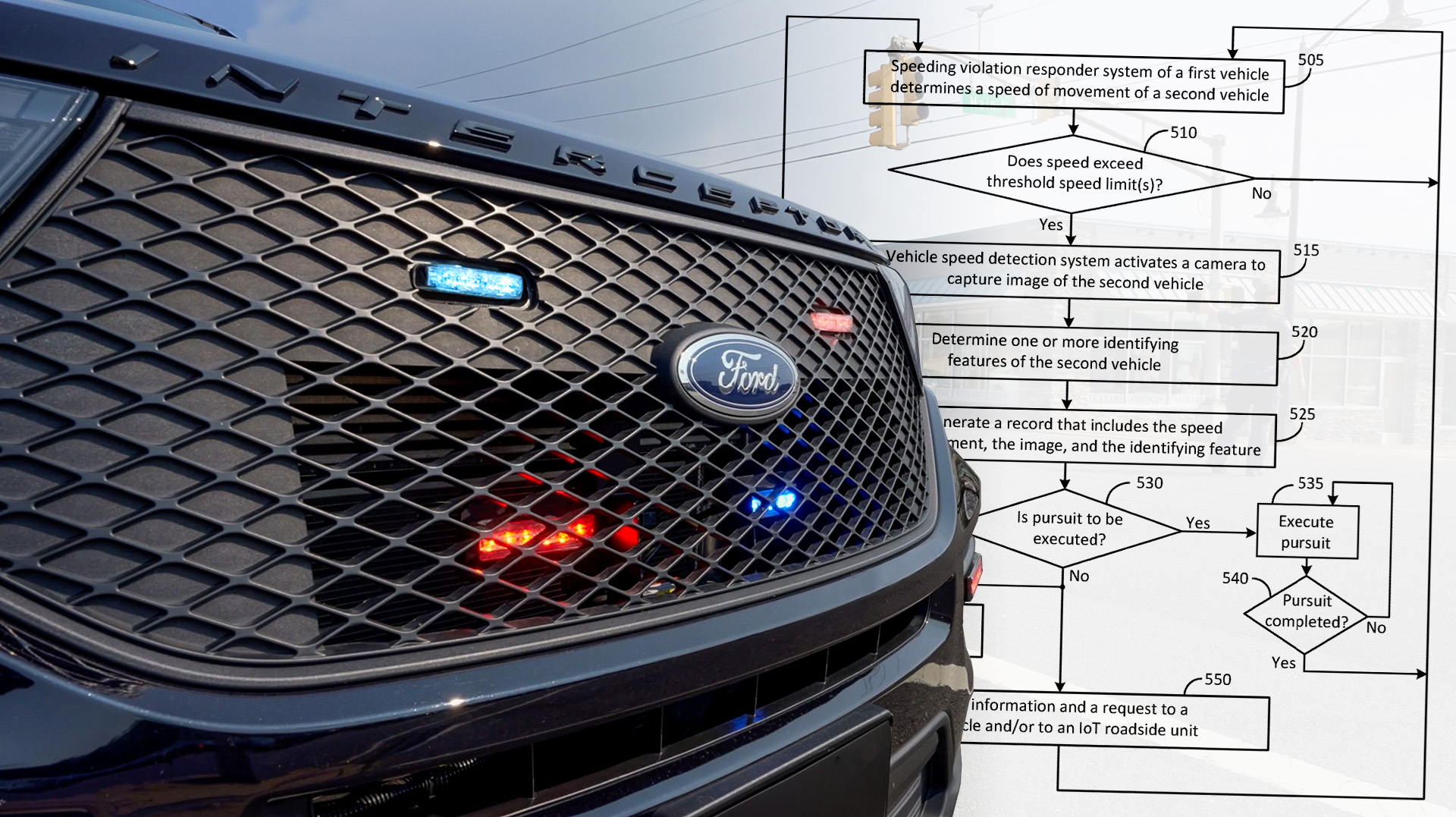

The same company that once sought to patent self-repossessing cars, then let that application expire, has a new idea to employ tech in a manner most drivers probably won’t love. A U.S. Patent and Trademark Office submission published July 18 titled “Systems and Methods for Detecting Speeding Violations” describes a way for Ford‘s vehicles to measure the speeds of nearby cars using cameras and sensors, and then potentially report those violations to the police.
UPDATE 7/31/2024 @ 3:30p ET: After publication, Ford reached out with a statement to clarify that the idea “is specific for application in law enforcement vehicles, such as the Ford Police Interceptor, and it’s a system that would automate a capability that law enforcement already have in use today, except this would utilize the built-in system and sensors in the vehicle. This patent does not state that driving data from customers’ vehicles would be shared with law enforcement, which is what some media have incorrectly reported. And note, patent applications are intended to protect new ideas but aren’t necessarily an indication of new business or product plans.”
That said, the document does leave the door open for the technology to be applied to non-police vehicles “operated by various types of agencies,” including ambulances, government fleets, and private security cars. The rest of the story continues below.
The application, which arrives to us by way of Motor Authority, contains a flowchart on page six explaining the logic that would govern the system. As illustrated, a vehicle would constantly be gathering speed data of surrounding traffic, using radar or lidar. If a particular car is determined to exceed a “threshold speed limit” (whether this would be a posted legal limit or otherwise isn’t decided), it would then switch the camera on and begin recording. It would also “determine one or more identifying features of the second vehicle,” to generate a record that may help authorities find it. From there, the data would be sent to additional connected monitoring devices and/or the police, and it’s up to the latter to determine whether to pursue the offending speeder or not.
The patent proposes multiple ways the recording system might behave. One pitch involves a 360-degree camera or network of cameras, capturing all the action. Another involves surrendering camera control during these scenarios to the police—I guess they’d look around with a joystick or something. And of course, the text notes the value of this wealth of information would have in courts of law.
You don’t need us to sound alarms over the implicit slipperiness of this slope, potentially mobilizing non-police cars to snitch on the rest of the public. We’ve likely all had that experience where somebody blazes past on the highway—or worse yet, “swims” through—and you’re thinking “Where are the cops now?” If such a system is used to deter truly reckless, egregious speeding, it might be a positive. But the age-old problem of technology is that you can never restrict or guarantee how it’ll be deployed after that genie leaves the bottle.
In an age when intelligent speed governors are gaining traction among legislators around the world, you’d figure the powers that be would just skip the complexities of cars sending videos of each other to each other, and just go straight to the part where they automatically fine you each time you speed. In the interim, it’s not like Ford’s technology is destined for the road; companies patent things all the time, and most remain pie-in-the-sky ideas that never touch the ground. That’s a good thing, because there are many questions lawmakers and car manufacturers alike must answer before this one ever should.
Got tips? Send ’em to tips@thedrive.com